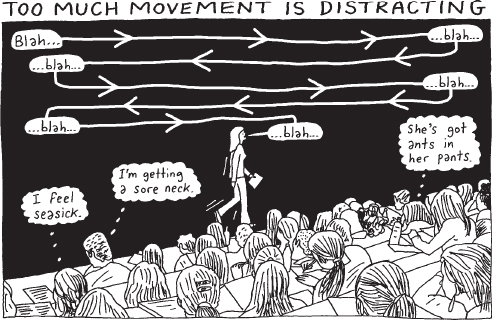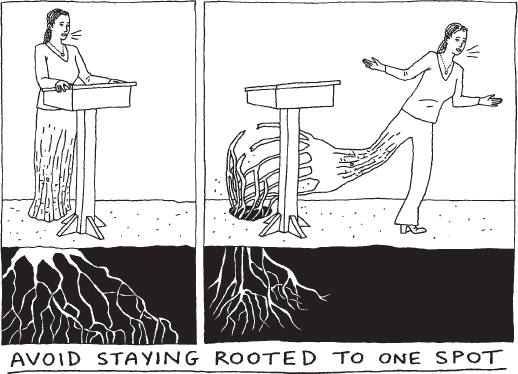Physical Movement
Printed Page 394
Physical movement describes how much or how little you move around while delivering a speech. Not surprisingly, standing stock-still (sometimes referred to as the “tree trunk” approach) isn’t very effective, nor is shifting or walking restlessly from side to side or back and forth (“pacing”) in front of your audience. A motionless speaker comes across as boring or odd, while a restless one is distracting and annoying.


Instead of going to either of these extremes, strive to incorporate a reasonable amount and variety of physical movement as you give your presentation. Skillful use of physical movement injects energy into your delivery and signals transitions between parts of your speech. For example, when making an especially important point in your presentation, you can take a few steps to the left in front of your audience, then casually walk back to your original spot when you shift to the next major idea. One useful tip is to combine moderate movement with the panning approach to eye contact, discussed earlier in this section.
How much physical movement, if any, is right for you? Move as much as necessary to invigorate your speech (even if you must come out from behind a lectern or podium), but not so much that you confuse or distract your audience.
Finally, a brief note about speaking from a lectern or podium. Although the lectern might make you feel somewhat more comfortable, it usually acts as a barrier between you and your listeners. Thus, unless you must be at the lectern because of a microphone, we recommend that you come out from behind it at least part of the time, and thereby interact more fully with your audience. When you are at the lectern, be sure to avoid gripping the sides or top tightly with your hands; such a grip adds tension to your body and will be clearly visible to audience members.
